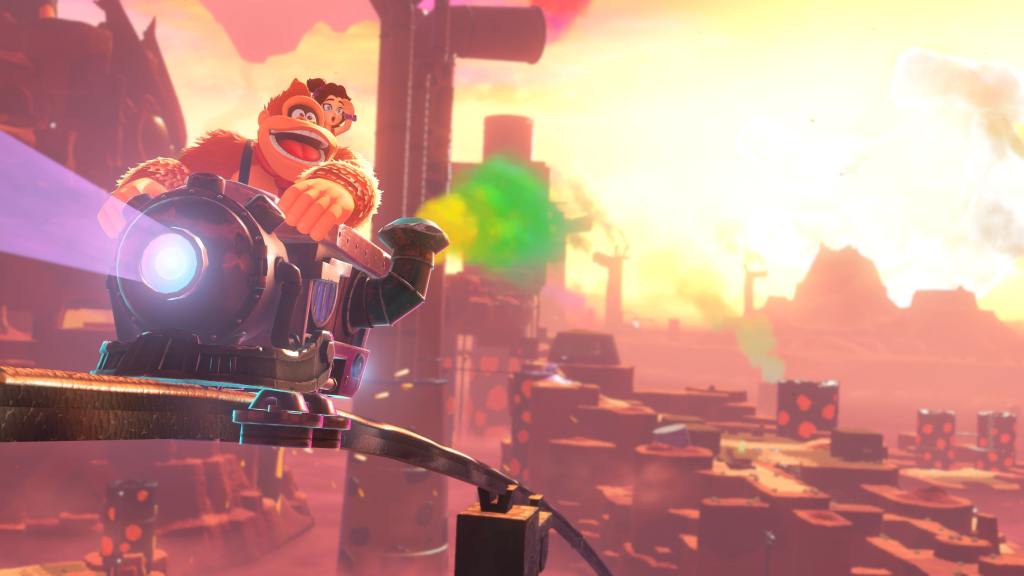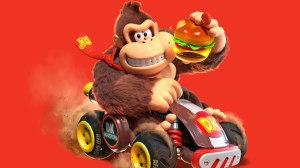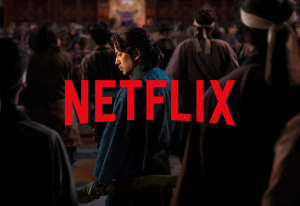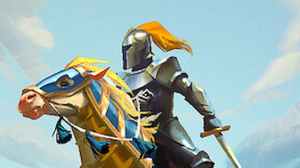The Nintendo Switch 2’s marquee games in its launch window are the biggest and most ambitious games for their respective franchises, large enough in scale that I’m actually worried about future titles. Mario Kart World and Donkey Kong Bananza shake up well-known formulas from the previous few decades, with World sporting a large free roam area and connected tracks, while Bananza followed with destructible environments in open sandbox levels.
Videos by ComicBook.com
Undoubtedly, these two games were possible because of the Switch 2’s hardware capabilities (abandoning the previous Switch in development), and they demonstrate how other gaming properties can benefit from the technical boost. But they also feel like the peak of a rising and creeping sense of scope, brought on by generations of hardware advancement.
Mario Kart World and Donkey Kong Bananza are excellent titles, but I fear that Nintendo has put itself in a position where there might be no room for its classic franchises to grow in the future.
How Nintendo Games Got Bigger Over The Years

Most of Nintendo’s ongoing franchises have transformed and taken different forms through the years, but increasing the sense of scale has been a common trait for properties like Mario and Zelda.
Look no further than the mainline Super Mario series: when it jumped from 2D to 3D with Super Mario 64, it completely upended the structure of what a Mario platformer can be with its open-ended nature for objectives and larger sandbox areas. The series continued to grow, with Mario traveling in space in Super Mario Galaxy and then embarking on a worldwide adventure in Super Mario Odyssey.
That Switch title took the Mario 64 format further, with larger areas and an unreasonable number of collectables scattered throughout, a gameplay loop that would extend to Bananza. Shortly before the release of Odyssey, fans were enamoured with The Legend of Zelda: Breath of the Wild, which threw out several Zelda conventions for a new open-world experience. And some Nintendo series scale up not by square footage, but by roster size, as is the case with Super Smash Bros. Ultimate having 89 playable fighters.
It’s natural for Mario Kart and Donkey Kong to follow suit, especially with the technical capabilities of new hardware. But looking at the trajectory of these Nintendo IPs, and how graphical improvements in video gaming are hitting a plateau, what would theoretical sequels to Mario Kart World and Donkey Kong Bananza even look like? It’s hard to imagine the scale getting even larger without overwhelming. At the same time, direct sequels that are largely similar to their predecessors could be disappointing to fans.
What’s Next For Mario Kart And Donkey Kong?

It’s more than likely that creators at Nintendo are having similar, forward-facing discussions, perhaps looking at challenges that we as consumers can’t even fathom. A company filled to the brim with talent shouldn’t have any issues creating new games for Mario Kart, Donkey Kong, Zelda, etc., with fun ideas and gratifying gameplay — they probably need those in order to justify their existence in the first place.
While it’s far too early to speculate on what new entries in these two series would look like, that won’t stop anyone from dreaming about what could come in the future. On a base level, it could be interesting to see a series like Mario Kart or Super Smash Bros. rebooted entirely, perhaps eschewing giant character rosters or open worlds for reinventions of gameplay systems.
Perhaps Donkey Kong could go back to its roots, in a similar way that The Legend of Zelda: Echoes of Wisdom or Super Mario Bros. Wonder did, returning to old gameplay mechanics and perspectives while adding a host of new and modern features. In the case of Donkey Kong, perhaps Nintendo could follow up with a 2D Donkey Kong Country game with some fun gimmicks.
If we’re lucky, Nintendo won’t even be chasing the idea of increasing scale to grow their beloved characters and worlds. Maybe those creators will be pursuing something that we as fans can’t even imagine.









